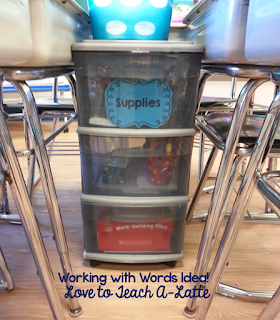Hey, hey, hey! It's Kelli from Tales of a Tenacious Teacher! I don't know about you, but I'm nose deep in all the new school year stuff I've barely found time to eat and sleep! One of my main focuses at the beginning of the year is to try to learn as much about my new group as possible. I'm trying to learn about their individual interests, families, strengths, areas of growth...... I could go on and on. How do I keep it all straight???
Anecdotal notes are a huge part of my formative assessments all year round. What are they exactly? It's a super fancy word for writing down your observations. Observations can tell you A LOT about your students for both academics and behavior. Don't believe me? Here are few reasons why I use anecdotal note-taking in my classroom:
- They help me track things in a variety of subjects including behaviors
- They help me be responsive to my students' needs
- They help me to notice patterns for a particular student or groups of students
- They provide explicit examples for discussions with my team, service members, and families
- They help teachers stay on top of each student and not just those who are struggling for the feedback that all students (and families) crave.
What's even more awesome about this formative assessment technique is how versatile it is! You can truly test out many different ways and use what works best for you. I for one have tried many different strategies to house my notes: binders, notebooks, post-its, labels... you name it. After 4 years, I finally found my "go-to" ways of collecting these notes. Here's a few different ways I collect this important data:
Paper & Pencil Strategy
Note-Taking Boxes
I give each of my students a number. That is one reason why I like this strategy and anecdotal note taking in general. Instead of trying to write down a student's name, I can just quickly jot their number down. It saves precious time.
How it works:
I write my focus at the top (an example template is in the cover photo). It might be an engagement inventory during reading, problems they got wrong on a math assessment, or participation during a group discussion. Then, I create a little "code" at the bottom. Usually it consists of symbols that are easy for me to jot quick and that might be repeated for more than one student. As I interact with students or scan the room, I jot down a quick note or symbol inside the student's box. This allows me to see who I have missed and lets me see everyone at a glance all at once. If I'm not writing a ton of information, this is definitely one of my favorite routes to go. I simply keep a clipboard with a bunch of these blank note taking boxes on hand so I can grab it at moments notice and grab some information. And since I keep it all in one place on the clip board, I know where to find them for when I need them!
Apps and Technology Strategy
Google Docs
What's cool about the note-taking boxes is I can take it digital too! I also have a blank Google Doc with the note-taking boxes and use my iPad to gather some data. I use the emoji keyboard for my symbols and since it saves my most used one, they are easy to find and tap and use for my students. I go digital with my note-taking boxes if I need to access them from multiples and don't want to bring my clip board or if I want to share them with my team, co-teacher, or service provides because it's easy to do so without loosing my original copy or having to make a paper copy. I still label them at the top (2) and just make a copy to start a new one. I add my key (2) at the bottom as a reference.
Evernote
Another app I found last year that I liked for anecdotal notes is the app Evernote. Here I can take notes based on subject. So I have my reading "notebook," writing "notebook," etc. This way, all my notes are organized by whatever I want to name it (1) in one spot that is easy to find and just like Google Docs, I can share my notes with others (2). I especially like using Evernote if I want to take pictures of student work to keep and show at our PLC or with my co-teacher. I don't love the limited formatting of the app, but I'm finding ways around it (plus I haven't fully dove in and explored it, so I'm sure I'm missing things). Both the app and computer version are helpful to take quick looks (3) of notes before opening them.
I've got my notes, now what?
Once I have my notes I do one of the following:
1. Plan strategy groups
- Is there a group of students who would benefit from some reteaching or the teaching of another strategy? My notes allow me to look for similarities in confusion on topics we are learning about or opportunities for students to have an extension of our learning.
2. Reach out to others for support
- "Hmmm I notice __(insert student name)__ is repeating the same work avoiding behaviors at this specific time. I wonder if my team has any suggestions on how I can help him/her be successful at this time."
3. Reflect on your teaching practices
- "Wow- we really struggle with carrying on a conversation. I'm going to need to help scaffold this work a bit more."
How do you keep track of student performance across the school year or unit? Leave a comment below!


















































